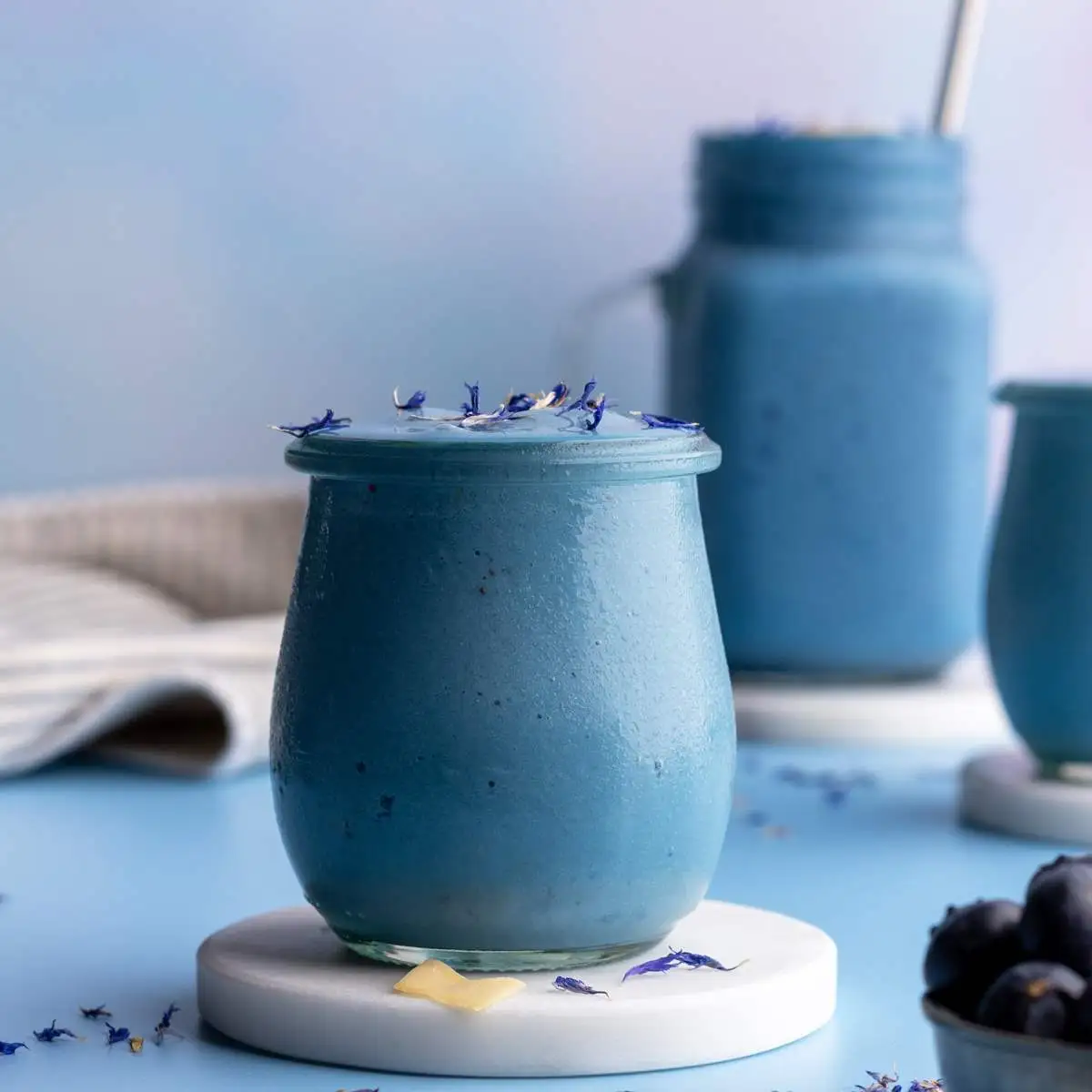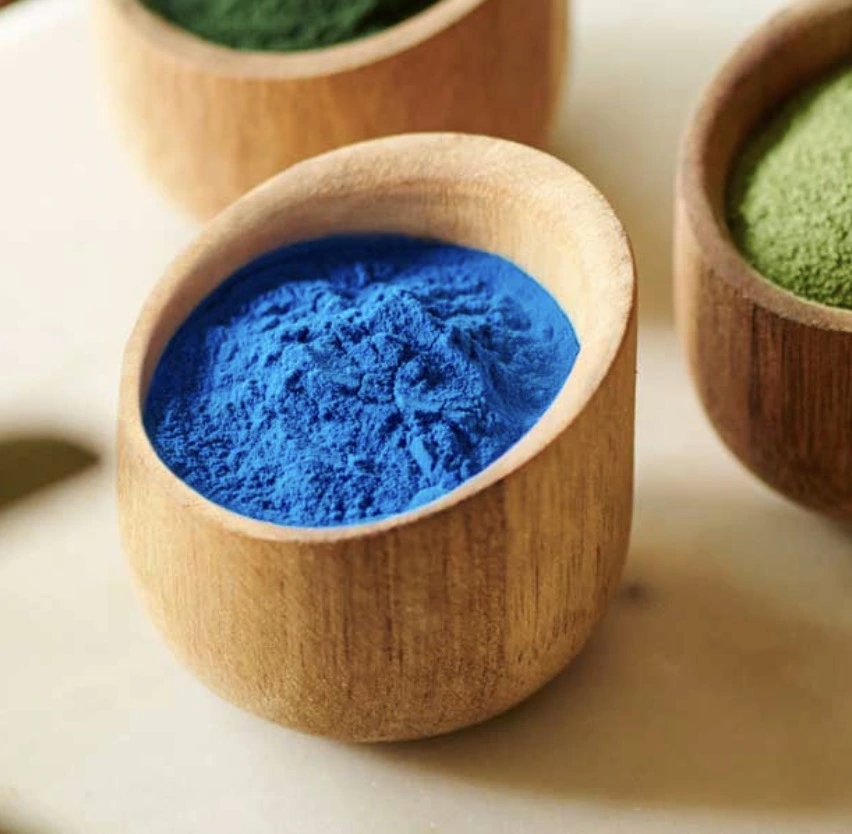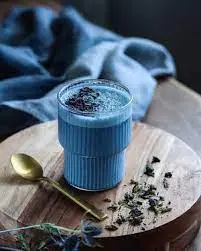Why Choose Gardenia Blue Over Synthetic Blue Dyes?
In the world of food coloring and cosmetics, the demand for natural alternatives to synthetic dyes has been steadily increasing. One such natural option that has gained significant attention is Gardenia Blue Pigment. Derived from the fruits of the Gardenia jasminoides plant, this vibrant blue colorant offers a host of benefits over its synthetic counterparts. In this comprehensive guide, we'll explore why Gardenia Blue is becoming the preferred choice for many manufacturers and consumers alike.

Benefits of Gardenia Blue Pigment vs Synthetic Dyes
When it comes to coloring food and cosmetic products, the choice between natural and synthetic dyes can significantly impact both the final product and consumer perception. Let's delve into the numerous advantages that Gardenia Blue Pigment offers over synthetic blue dyes.
Natural Origin and Clean Label Appeal
Gardenia Blue Pigment is extracted from the fruits of the Gardenia jasminoides plant, making it a completely natural coloring agent. This natural origin is a significant advantage in today's market, where consumers are increasingly seeking clean label products. By using Gardenia Blue, manufacturers can proudly list "natural color" on their ingredient labels, appealing to health-conscious consumers who prefer products free from artificial additives.
Vibrant and Stable Color Profile
Despite its natural origins, Gardenia Blue Pigment offers a rich, intense blue color that rivals many synthetic dyes. The pigment's stability across a wide pH range (4-8) ensures that the color remains consistent in various product formulations. Moreover, it can withstand temperatures up to 120°C for 60 minutes without fading, making it suitable for a variety of processing conditions.
Versatility in Applications
Gardenia Blue Pigment's versatility is one of its standout features. It's easily soluble in water and aqueous ethanol solutions, allowing for seamless integration into a wide range of food and cosmetic products. From beverages and confectionery to skincare and haircare products, Gardenia Blue can be utilized across diverse applications, offering manufacturers flexibility in product development.
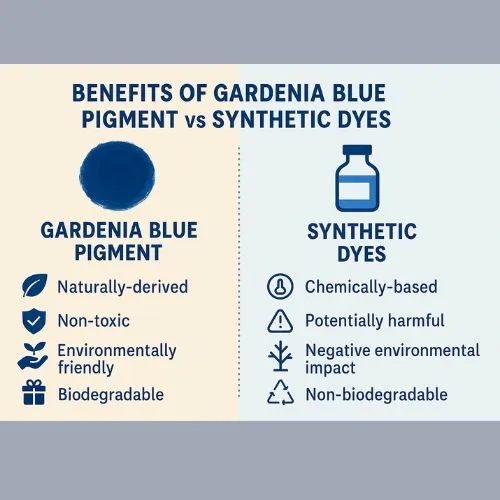
Applications of Gardenia Blue Pigment in Food & Cosmetics
The versatility of Gardenia Blue Pigment opens up a world of possibilities in both the food and cosmetic industries. Let's explore some of the exciting applications where this natural blue colorant shines.
Enhancing Food Products
In the food industry, Gardenia Blue Pigment finds extensive use across various categories. It's particularly popular in confectionery, where it can create visually striking blue candies and gummies. Bakery products also benefit from this natural colorant, with blue frostings and cake decorations becoming increasingly common. In the beverage sector, Gardenia Blue is used to create eye-catching blue drinks, from sports drinks to cocktails. Its stability in different pH environments makes it suitable for dairy products as well, allowing for naturally colored blue yogurts and ice creams.
Innovating in Cosmetics
The cosmetics industry has embraced Gardenia Blue Pigment as a natural alternative for creating vibrant blue shades in various products. In skincare, it's used to add a cool, refreshing look to face masks and serums. Makeup products like eyeshadows and lipsticks benefit from its intense color, allowing for the creation of bold, nature-inspired looks. Hair care products have also incorporated Gardenia Blue, with some brands using it to create temporary blue hair dyes or add a blue tint to shampoos and conditioners for blonde or gray hair.
Pushing Boundaries in Product Design
Beyond traditional applications, innovative product developers are finding unique ways to incorporate Gardenia Blue Pigment. Some companies are using it in biodegradable packaging materials to create visually appealing, eco-friendly containers. In the realm of functional foods and supplements, Gardenia Blue is being explored for its potential to add visual appeal to products marketed for their calming or relaxing properties, playing on the psychological associations of the color blue.
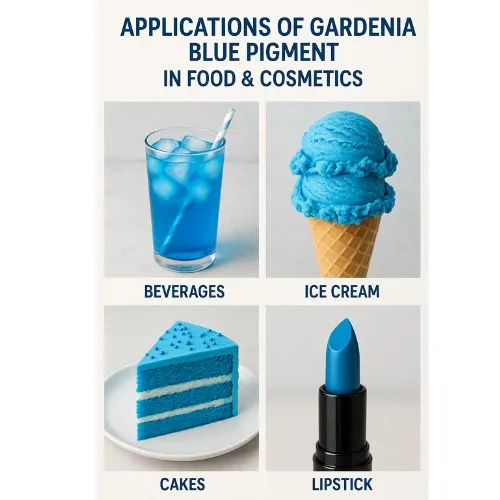
Is Gardenia Blue Pigment Safer Than Synthetic Alternatives?
Safety is a paramount concern when it comes to food additives and cosmetic ingredients. Gardenia Blue Pigment offers several advantages in this regard, making it a potentially safer alternative to synthetic blue dyes.
Reduced Risk of Allergic Reactions
Synthetic blue dyes, particularly FD&C Blue No. 1 (Brilliant Blue) and FD&C Blue No. 2 (Indigo Carmine), have been associated with allergic reactions in some individuals. These reactions can range from mild skin irritations to more severe respiratory issues. Gardenia Blue Pigment, being derived from a natural source, typically carries a lower risk of triggering such allergic responses. This makes it a preferable option for individuals with sensitivities to synthetic dyes or those looking to minimize their exposure to artificial additives.
Absence of Harmful Chemical Compounds
Many synthetic dyes are created using complex chemical processes that can sometimes leave trace amounts of potentially harmful compounds in the final product. These may include heavy metals or other contaminants that have raised health concerns. Gardenia Blue Pigment, extracted through natural processes, doesn't carry this risk. The extraction method, typically involving water and ethanol, ensures that the final product is free from harmful chemical residues, making it a cleaner and potentially safer option for both food and cosmetic applications.
Environmental Considerations
The safety of a product extends beyond its direct impact on human health to its effects on the environment. Synthetic dyes often require extensive chemical processing, which can lead to environmental pollution if not properly managed. In contrast, the production of Gardenia Blue Pigment has a lower environmental footprint. The natural extraction process produces fewer harmful byproducts, and the biodegradable nature of the pigment means it's less likely to accumulate in ecosystems. This environmental safety aspect is increasingly important to consumers and regulatory bodies alike.
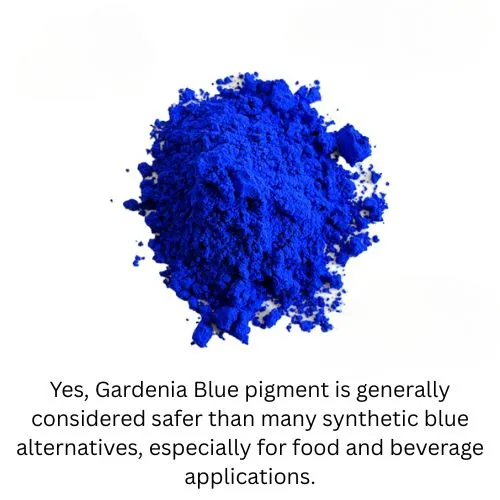
Conclusion
Gardenia Blue Pigment emerges as a compelling alternative to synthetic blue dyes, offering a combination of natural origin, vibrant color, versatility, and improved safety profile. As consumers continue to prioritize clean label products and natural ingredients, the demand for Gardenia Blue is likely to grow across both food and cosmetic industries. Its ability to provide intense, stable coloration while aligning with consumer preferences for natural products makes it a valuable tool for manufacturers looking to innovate and meet evolving market demands.
For those interested in exploring the potential of Gardenia Blue Pigment in their products, Yangge Biotech Co., Ltd. offers high-quality, natural Gardenia Blue extracts. Our team of experts is ready to assist you in incorporating this versatile natural colorant into your formulations. To learn more about our Gardenia Blue Pigment and other natural plant extracts, please contact us at info@yanggebiotech.com.
FAQ
Q: Can we get some samples to test before purchasing?
A: Of course, we can provide free samples of 20 to 100 grams, but the shipping cost is at the customer's expense. The shipping cost can be deducted from the next order, or the samples can be sent through your courier account.
Q: Do your products have relevant certifications?
A: Yes, our products are certified for HALAL, ISO, HACCP, Kosher, and other certifications.
Q: What is the minimum order quantity (MOQ)?
A: Small batches of samples can be customized according to your requirements.
Q: Do you offer OEM and ODM services? Can the formula be customized based on our own?
A: Of course, we provide ODM and OEM services to many customers. Our product range includes softgels, capsules, tablets, sachets, granules, and private label services. Simply contact us and let us know your requirements. Our experienced R&D team can also develop new products with specific formulas.
Please contact us to design your own branded products.
Q: How do you handle quality complaints?
A: First, we have a comprehensive quality control SOP. We provide authoritative third-party inspection reports for almost all products before shipment to minimize the possibility of quality issues. Second, we have a comprehensive return and exchange procedure. If there is a genuine quality dispute, we will strictly follow the SOP.
Q: How do you ship? How long does delivery take?
A: For small orders, we typically use DHL, UPS, EMS, FedEx, or TNT. Delivery typically takes 3-7 days. We also offer air and sea freight services. We have a strong freight forwarding team and can provide you with a one-stop service, including DDP and DDU.
Q: What are your payment terms?
A: 100% prepayment, payable by T/T, Western Union, MoneyGram, or PayPal.
Q: What is the shelf life of your products?
A: 2 years with proper storage.
Q: Is the packaging environmentally friendly?
A: We attach great importance to environmental protection and are constantly improving our product packaging. Some products are packaged in recyclable paper. Packaging materials are carefully selected to ensure product safety during transportation and storage, and to minimize environmental impact. We are committed to achieving a balance between environmental friendliness and practicality in our product packaging, and to contributing to sustainable development.
References
1. Johnson, A. R., & Wrolstad, R. E. (2018). "Comparison of Natural and Synthetic Blue Colorants: Stability and Applications in Food Systems." Journal of Food Science and Technology, 55(7), 2623-2631.
2. Chen, X., Wu, X., & Chai, W. (2019). "Gardenia Blue: A Comprehensive Review of Its Extraction, Properties, and Applications." Critical Reviews in Food Science and Nutrition, 59(18), 3026-3038.
3. Smith, L. K., & Brown, T. J. (2020). "Consumer Perceptions of Natural vs. Synthetic Food Colorants: A Market Analysis." International Journal of Consumer Studies, 44(3), 267-279.
4. Garcia-Falcon, M. S., & Simal-Gandara, J. (2021). "Safety Assessment of Natural Food Colorants: Focus on Gardenia-Derived Pigments." Food and Chemical Toxicology, 147, 111864.
5. Yamada, K., Mori, Y., & Nakamura, Y. (2022). "Innovative Applications of Gardenia Blue Pigment in Cosmetic Formulations: A Review of Recent Developments." International Journal of Cosmetic Science, 44(2), 115-127.

Based on your location and order quantity, you will have the opportunity to receive a limited time free shipping promotion!
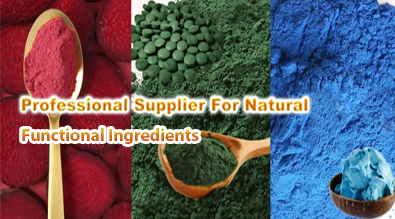
Who we are
